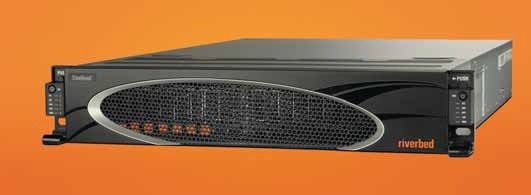Riverbed aiming to simplify the consolidation of data

In the corporate world, it’s not unusual to find that a company’s IT infrastructure is widely distributed, sometimes across several locations around the country.
Undoubtedly this is difficult to manage.
ADVERTISEMENT
In fact, this dispersion of information and the proliferation of remote servers often mean that critical business applications are spread over great distances and accessible only via a wide area network (WAN), which can impede their performance when called upon.
“The problem with this is that applications are designed for you to be sitting right next to the server,” Riverbed A/NZ systems engineering manager Damien Murphy says.
“These days, however, all of the packets that are going back and forward are not just travelling 10m between the server and desktop; rather, they are travelling thousands of kilometres. This means performance times of, say, opening a file goes from 10 seconds to 12 minutes, which means people can’t do their work.”
As a result of this, many organisations have initiated consolidation projects to centralise distributed IT infrastructure. By bringing application servers and storage resources back into the data centre, IT departments have been able to simplify management, lower costs, improve data protection and gain more efficient use of resources.
“It’s all about the more efficient use of infrastructure,” Damien says.
“Machines have become more effective and efficient, so infrastructure should support that. And that’s where Riverbed fi ts into the equation – we’re all about WAN acceleration and optimisation.
“With our technology, businesses can now bring their multiple remote sites together as a centralised data centre.
“Riverbed’s appliances simply get plugged in between a switch and a router in a remote location. They basically remove all the ‘chit chat’ between the two, which means an application operates as if it was located on a local server.”
Unfortunately, consolidated architectures often result in poor performance and increased costs due to the constraints of operating across the WAN.
Riverbed’s Steelhead series, however, allows organisations to break through this performance barrier. The Steelhead CX series overcomes bandwidth and geographic limitations to make users more productive, data transfers faster and applications perform seamlessly regardless of location.
Alternatively, the Steelhead EX series combines WAN optimisation, virtualisation and storage consolidation to enable organisations to meet the needs of the active branch offi ce with an enterprise-class branch offi ce box. The Steelhead EX series can also be upgraded to include Riverbed Granite, which allows end users in a branch to access and write to centralised storage over the WAN at local speeds.
“Steelhead is simply a ‘black box’ solution that you plug in at both ends. There’s no programming or confi guration necessary. It comes with a serial cable and a 10 question wizard to set it up,” Damien says.
“Steelhead is a bit like a vacuum cleaner for data. Basically, it’s all about removing information from remote servers and getting it back to the data centre.
“This means cablers can run a smaller number of high capacity cables in a data centre. The Riverbed technology optimises that then manages performance expectations, with the addition of low profi le, discreet technology.”
Damien explains that the cheapest and safest place to store data is a data centre.
“Riverbed technology makes 3,000 kilometres feel like 30 metres, and users get the same experience,” he says.
“We’re an enabler. Businesses want to move to a low cost and safe centralised data centres but they have people out in the field. Our technology is used to enable the transition.”
-
ADVERTISEMENT
-
ADVERTISEMENT

